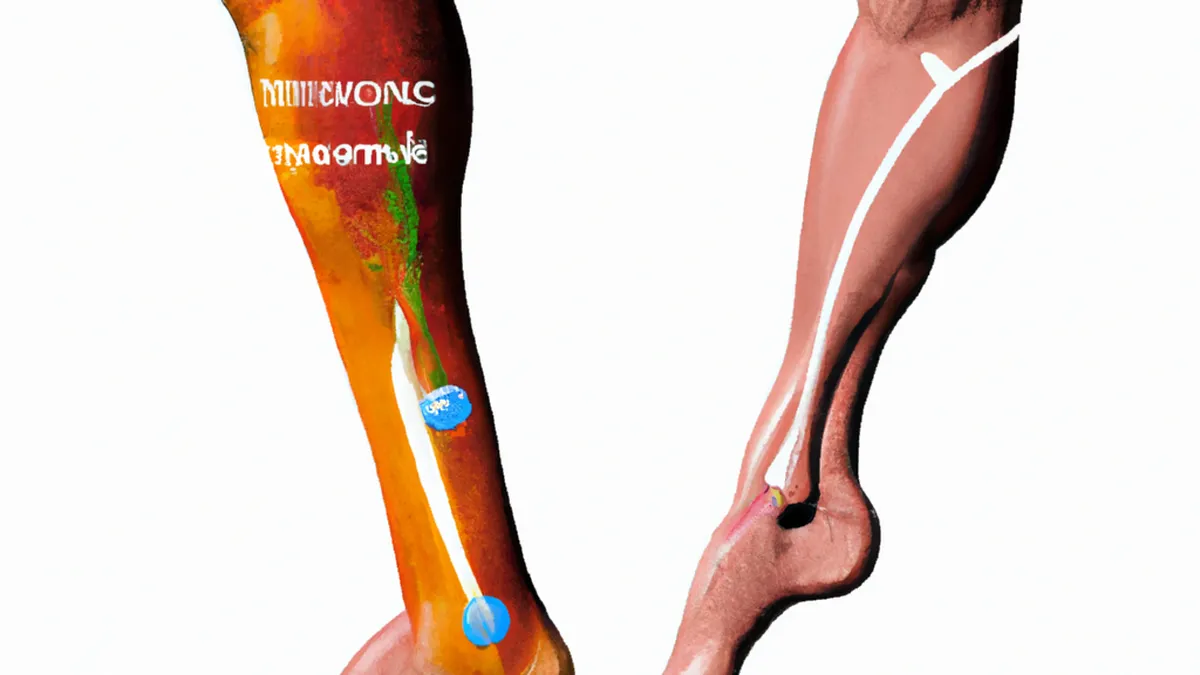Nourishing Your Body for Shin Splint Relief
The Connection Between Nutrition and Inflammation in Shin Splint Management
Shin splints, or medial tibial stress syndrome, commonly affect runners, dancers, and athletes. Pain along the shinbone (tibia) arises from repetitive stress on bone and surrounding tissues. Rest, proper footwear, and effective training techniques support recovery. Nutrition significantly impacts inflammation management for shin splints. Understanding nutrition’s role can enhance recovery, boost performance, and prevent future injuries.
Understanding Shin Splints and Inflammation
Excessive stress on the shinbone and connective tissues causes shin splints. This stress leads to micro-tears and inflammation, resulting in pain and discomfort. Inflammation serves as your body’s natural response to injury or stress, signaling the need for repair. However, chronic inflammation can complicate recovery and prolong pain, making effective management essential.
Nutrition profoundly influences inflammation levels. Specific foods can either worsen or reduce inflammation. Making informed dietary choices supports healing and improves overall health, benefiting athletes recovering from shin splints.
Foods That Fight Inflammation
Incorporating anti-inflammatory foods into your diet helps manage shin splint-related inflammation. Research shows that certain nutrients significantly affect inflammation. Consider these foods:
1. Omega-3 Fatty Acids
Omega-3 fatty acids possess strong anti-inflammatory properties. They reduce inflammatory substance production in the body. Fatty fish like salmon, mackerel, and sardines provide omega-3s. Vegetarian and vegan options include flaxseeds, chia seeds, and walnuts. Adding these foods can alleviate inflammation and pain from shin splints.
2. Fruits and Vegetables
Fruits and vegetables contain antioxidants and phytochemicals that combat oxidative stress and inflammation. Berries like blueberries and strawberries, leafy greens like spinach and kale, and cruciferous vegetables like broccoli and Brussels sprouts offer significant benefits. Fill your plate with colorful fruits and vegetables to maximize anti-inflammatory effects.
3. Whole Grains
Whole grains like brown rice, quinoa, and oats are rich in fiber and essential nutrients that reduce inflammation. Whole grains retain their nutrient-rich outer layer, stabilizing blood sugar levels and providing sustained energy. This is crucial for athletes maintaining performance while recovering from shin splints.
4. Nuts and Seeds
Nuts and seeds, such as almonds and walnuts, offer healthy fats and nutrients that combat inflammation effectively.
Conclusion
Nutrition plays a vital role in managing inflammation related to shin splints. Incorporate anti-inflammatory foods for improved recovery and performance.
Below are related products based on this post:
FAQ
What are shin splints and how does inflammation relate to them?
Shin splints, or medial tibial stress syndrome, are characterized by pain along the shinbone due to repetitive stress on the bone and surrounding tissues. Inflammation occurs as the body’s natural response to injury or stress, signaling the need for repair. However, chronic inflammation can hinder recovery and prolong pain, making effective management critical.
How can nutrition help manage inflammation related to shin splints?
Nutrition plays a crucial role in managing inflammation. Certain foods, particularly those rich in omega-3 fatty acids, antioxidants, and fiber, can help reduce inflammation levels. Incorporating anti-inflammatory foods such as fatty fish, fruits and vegetables, whole grains, and nuts can support healing and enhance overall health, benefiting athletes recovering from shin splints.
What specific foods should I include in my diet to fight inflammation?
To combat inflammation, consider including foods high in omega-3 fatty acids like fatty fish, as well as a variety of fruits and vegetables rich in antioxidants, such as berries and leafy greens. Whole grains like brown rice and quinoa, along with nuts and seeds, also provide essential nutrients that help reduce inflammation and support recovery from shin splints.















Post Comment